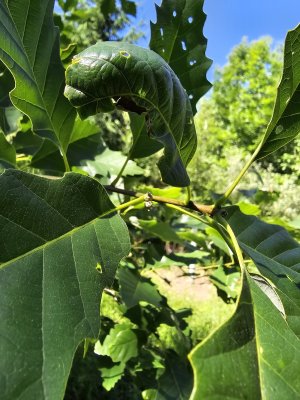Teeder
5 year old buck +
It's my understanding oaks can self pollinate, but set fruit much better with another tree in the family nearby. So, my assumption is that if an oak has acorns forming, it most likely has been pollinated by another close by tree, correct?
I have a chinkapin oak that has acorns for the first time this year. There are no other chinkapins (or any other white varieties) anywhere close to my area, but this tree is surrounded by about 3 dozen english oaks, a chestnut oak, a swamp white and a swamp chestnut that were all flowering on my 10 acres. A couple english and the chestnut oak are within 30 yards up-wind of the chinkapin.
Its probably just wishful thinking, but how likely is it that these acorns would produce a hybrid?
The tree is only about 8' tall, any suggestions on how to protect the acorns, so nothing gets them before I do?
Thanks!
I have a chinkapin oak that has acorns for the first time this year. There are no other chinkapins (or any other white varieties) anywhere close to my area, but this tree is surrounded by about 3 dozen english oaks, a chestnut oak, a swamp white and a swamp chestnut that were all flowering on my 10 acres. A couple english and the chestnut oak are within 30 yards up-wind of the chinkapin.
Its probably just wishful thinking, but how likely is it that these acorns would produce a hybrid?
The tree is only about 8' tall, any suggestions on how to protect the acorns, so nothing gets them before I do?
Thanks!


